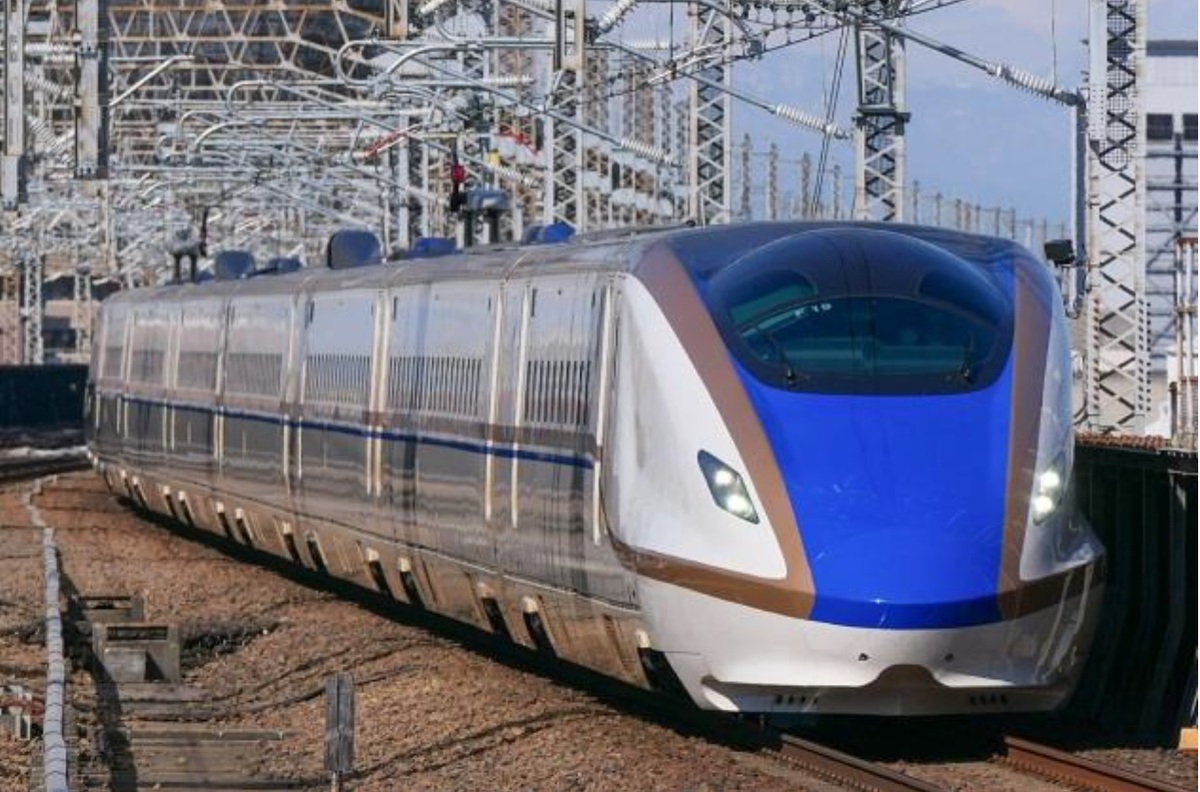Current issue
Online first
Archive
About the Journal
Aims and scope
Publisher and Editorial
Advertising policy
For Authors
Paper review procedures
Procedures protecting authentic authorship of papers
Paper preparation manual
Plagiarism check
Publication ethics
Reviewers
APC
Editorial and Scientific Board
Contact
Reviewers
High-speed trains in Japan in the years 2002–2020
1
The International University of Logistics and Transport in Wrocław, Poland
2
Faculty of Management, Lublin University of Technology, Poland
These authors had equal contribution to this work
Submission date: 2024-03-04
Final revision date: 2024-06-26
Acceptance date: 2024-06-28
Online publication date: 2024-08-05
Publication date: 2024-11-13
Corresponding author
Zenon Zamiar
The International University of Logistics and Transport in Wrocław, The International University of Logistics and Transport in Wrocław, Sołtysowicka 19B, 51-168, Wrocław, Poland
The International University of Logistics and Transport in Wrocław, The International University of Logistics and Transport in Wrocław, Sołtysowicka 19B, 51-168, Wrocław, Poland
Combustion Engines 2024,199(4), 88-96
KEYWORDS
TOPICS
ABSTRACT
High-speed trains are the most modern and advanced technology for moving passengers in land transport. Their main advantage is that they achieve high speeds, usually from over 200 to 300 km/h, which significantly shortens the travel time in relation to the time needed to cover the same distance by conventional trains. The article presents the development of high-speed rail in Japan, an island country located within the ring of fire of the Pacific. The analysis of the technical condition and the stages of historical development of high-speed railways were preceded by an assessment of the economy and transport as well as a study of transport intensity. The summary of the article includes the effects and benefits of using high-speed rail, as well as methods of financing and plans for further development.
REFERENCES (41)
1.
Andrzejewski M, Pielecha I, Merkisz J, Świechowicz R, Nowak M. Modern drive systems of rail vehicles. Combus-tion engines. 2019;178(3):76-81. https://doi.org/10.19206/CE-20....
4.
Dyr T. High-speed railways as a factor in improving the competitiveness of railways on the transport market (in Polish). Technika Transportu Szynowego. 2010;11-12:33-43.
9.
Gorlewski B. High-speed rail. Economic conditions (in Polish). Publishing House of the Warsaw School of Eco-nomics. Warsaw 2012.
10.
Graff M. E5 series Shinkansen train (in Polish). Technika Transportu Szynowego.2012;10:34-36.
11.
Graff M. Shinkansen – high-speed lines and trains in Japan (in Polish). Technika Transportu Szynowego. 2011;7-8:21-52.
12.
Heimburger J.-F. Japan and natural disasters: prevention and risk management. John Wiley & Sons 2018.
13.
Hornyak T. Shinkansen high-speed train network in Japan, Japan Station. https://www.japanstation.com/s....
23.
Mindur L, Mindur M. The development of high-speed rail in the Federal Republic of Germany between 2002-202. Scien-tific Journal of Silesian University of Technology. Series Transport. 2022;117:151-174.
24.
Mindur L. (ed.). Technologie transportowe (in Polish). Publishing House ITEe–PIB, Warsaw–Radom 2014.
25.
Mindur M. (ed.). Logistyka. Nauka–Badania–Rozwój (in Polish). Publishing House ITEe–PIB, Warsaw–Radom 2017.
26.
Mindur M. Transportochłonność gospodarki światowej w latach 1998-2015 (in Polish). Gospodarka Materiałowa i Logistyka. 2016;10.
27.
Nakamura A, Graff M. Shinkansen E7/W7 (in Polish). Technika Transportu Szynowego. 2015;11:43-45.
29.
Ogawa K. Japan wants more 'private' in public-private bullet train funding. NikkeiAsia 2019. https://asia.nikkei.com/Busine....
32.
Sawczuk W, Kołodziejski S, Rilo Cañás AM. Determination of the resistance to motion of a cargo train when driving without a drive. Combustion Engines. 2024;197(2):64-70. https://doi.org/10.19206/CE-18....
35.
Statistical Handbook of Japan 2013-2022, Ministry of Inter-nal Affairs and Communications. https://www.stat.go.jp/english....
39.
Technical Regulatory Standards on Japanese Railways. Railway Bureau Ministry of Land, Infrastructure, Transport and Tourism. https://www.mlit.go.jp/english....
CITATIONS (2):
1.
Research and modeling of wear of driving and rolling wheel sets in the ELF I electric multiple unit
Armando Miguel Rilo Cañás, Wojciech - Sawczuk, Mateusz - Jüngst
Combustion Engines
Armando Miguel Rilo Cañás, Wojciech - Sawczuk, Mateusz - Jüngst
Combustion Engines
2.
The history of the emergence, development and improvement of high-speed railways: Technical, socio-economic and cultural aspects
Oleh Strelko, Nadiia Ryzheva, Svitlana Hurinchuk, Yuliia Berdnychenko
History of science and technology
Oleh Strelko, Nadiia Ryzheva, Svitlana Hurinchuk, Yuliia Berdnychenko
History of science and technology
We process personal data collected when visiting the website. The function of obtaining information about users and their behavior is carried out by voluntarily entered information in forms and saving cookies in end devices. Data, including cookies, are used to provide services, improve the user experience and to analyze the traffic in accordance with the Privacy policy. Data are also collected and processed by Google Analytics tool (more).
You can change cookies settings in your browser. Restricted use of cookies in the browser configuration may affect some functionalities of the website.
You can change cookies settings in your browser. Restricted use of cookies in the browser configuration may affect some functionalities of the website.



